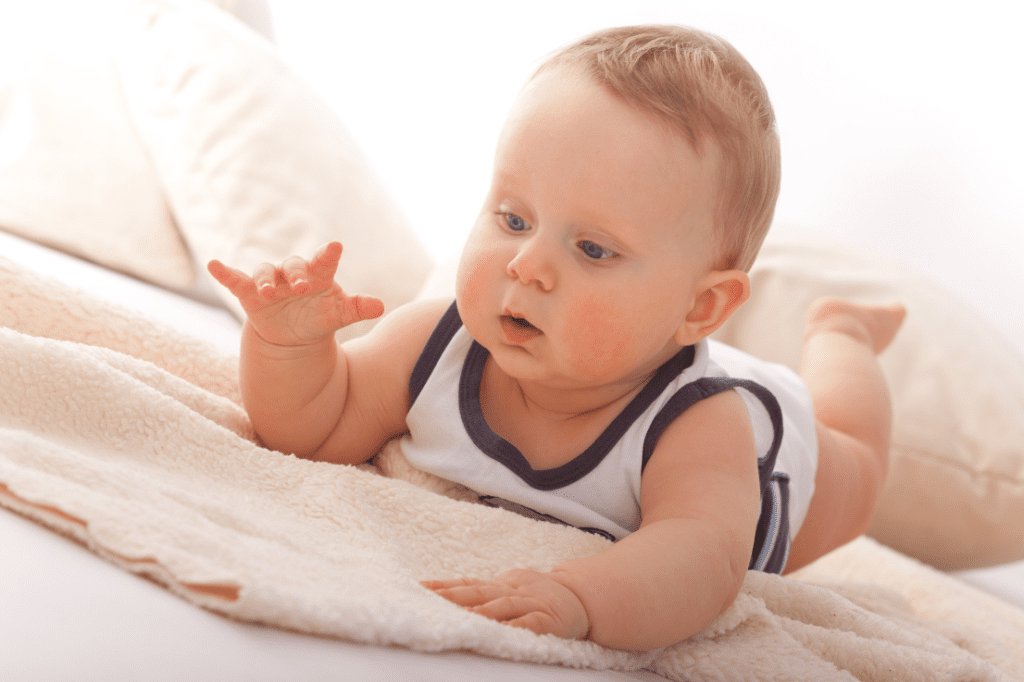Getting Down to the CORE
– How To Detect Trunk Weakness Throughout the Lifespan –
Core strength is a popular topic for all ages. You may already know the importance of having a strong, stable trunk; it is necessary for effectively being upright against gravity, using your arms and legs efficiently, and preventing pain and discomfort later in life. Signs of trunk weakness are often obvious for adults, but in the pediatric population these signs may be more subtle, making them difficult to detect. Here are some signs of trunk weakness throughout the life span in each developmental position:
Lying on Back and Belly
Core strength is essential from the beginning of development. As children play on their backs and bellies, core strength is needed to stabilize the trunk while moving the extremities. If your baby is having difficulty pushing on their arms while on their belly or having difficulty grabbing their feet while on their back, this may indicate core weakness.

Core muscles are also responsible for trunk rotation, which is needed throughout the lifespan to perform transitions. Rolling is one of the first transitions babies learn, and requires adequate trunk rotation. If your child is having difficulty rolling from back to belly, this may indicate core weakness.
Sitting
As children progress to playing in sitting, core weakness may become more evident. Sitting requires adequate trunk strength to maintain the trunk and head upright against gravity while playing. If your child is having difficulty holding their head up, the core may be to blame. Core weakness may also present as abnormal sitting posture. A common example of this is w-sitting. The position of the legs when w-sitting provides stability, decreasing the need to use the trunk musculature for sitting.
Sitting with legs overly extended or out to the side are also examples of a child seeking stability with their legs to compensate for core weakness. Additionally, trunk alignment can be effected by core weakness. For example, when a child “slouches,” sitting with a curved spine and weight shifted to the back of the pelvis, this due to limited core strength.
Trunk strength is necessary for a child to truly play in sitting. As mentioned above, it is needed to hold the head up to visually scan the environment and ultimately reach for toys. Trunk strength is especially needed to rotate the body and reach for toys to the side. Activation and strength of core musculature allows children to maintain their balance while using their hands to play, bang, stack, and clap in sitting.
If a child does not have adequate trunk strength, they may not be able to have these play experiences. This may ultimately have difficulty with fine motor skills such as grasping and object manipulation. If your child is able to sit, but is not able to fully enjoy the dynamic aspects of play in this position, this may be indicative of core weakness.
Transitions
Before you know it, your child will be on the move, crawling, sitting, and standing, constantly moving between these positions. Trunk strength is imperative for rotating the trunk, a skill needed to transition between each of these positions. If your child is having difficulty transitioning from sitting to hands and knees, or is performing this transition forward over the legs (without trunk rotation), core weakness may be a factor.
Similarly, children with trunk weakness may have trouble transitioning in and out of sitting on the floor, kneeling at a surface, or placing their leg in front of them to pull to stand at surface. Each of these movements requires trunk rotation as well as core stability to efficiently transition from one position to another.

Hands and Knees
Is your child having difficulty assuming or maintaining hands and knees? Core strength is needed to maintain the hips flexed beneath the body to achieve and maintain this position. Furthermore, adequate strength is necessary to maintain this position while reaching and ultimately crawling. If your child’s legs are splaying to the side, or if they cannot yet reach or crawl in this position, core weakness should be suspected. Your child may also demonstrate a swayed back in hands and knees position if weakness is present.
Standing and Walking
If core weakness continues throughout the lifespan, it can negatively affect a child’s standing posture and walking skills. Prior to independent standing and walking, children with trunk weakness may lean their body against the surface at which they are standing. Delaying their ability to stand and walk independently. For children who have achieved independent standing, core weakness may present as standing with the back arched (shoulder’s aligned behind the hips) or the knees locked out to compensate.
Core weakness also affects walking patterns. Limited trunk rotation, decreased arm swing, or even toe walking may result. Lastly, children with core weakness may have difficulty with higher level gross motor skills. Some examples of these are difficulty with arm swing while skipping. Along with the inability to push up onto a surface when climbing onto a platform (such as out of a pool or ball pit). Another example is, trouble holding their trunk upright when descending a slide.

As you can see, core weakness can be very sneaky, infiltrating into each stage of development. The good news is that our pediatric physical therapists can help children of all ages improve their core strength. If your child is exhibiting any of these signs of core weakness, call our clinic today at 773-687-9241! Let us help you stop core weakness from sneaking into your child’s developmental future.
Have an older, school age child? Check out our Therapeutic Children’s Academy and see how we can help your entire family reach their maximum potential


